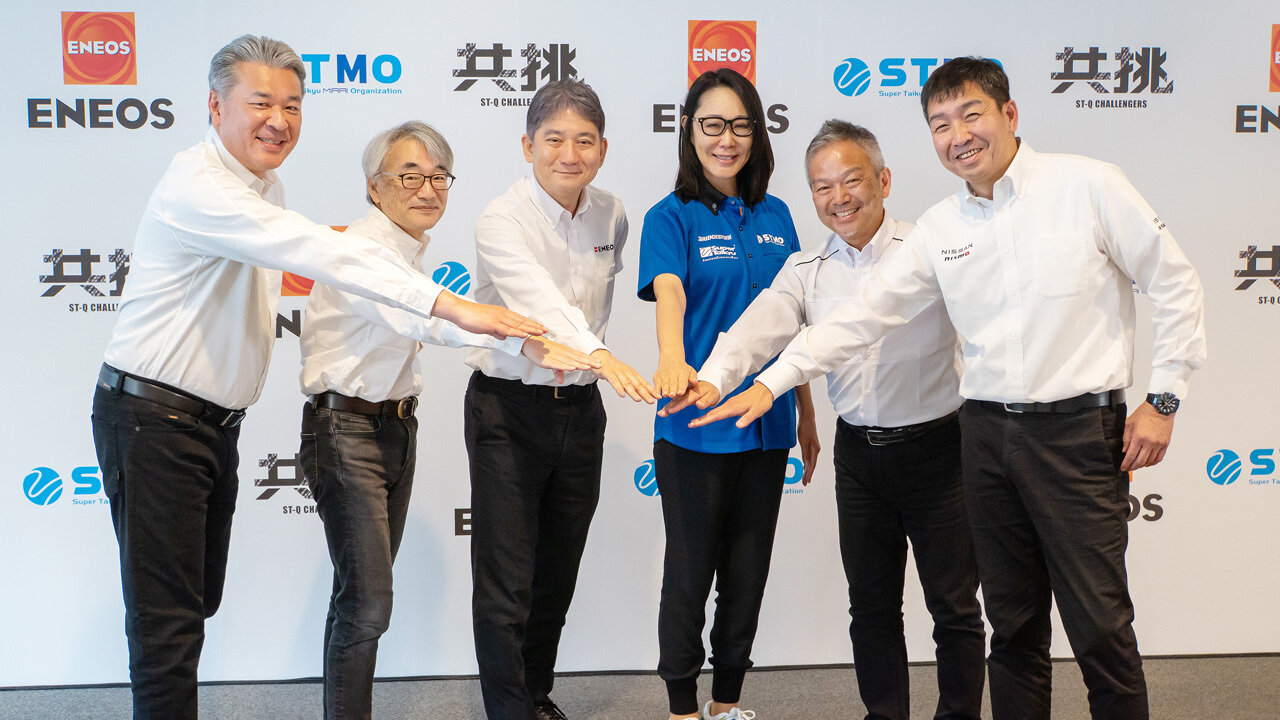
At the Super Taikyu Fuji 24 Hours, an all-Japan force of fuel and car manufacturers announced the development of a low-carbon gasoline. During the press conference, the companies emphasized the importance of a multi-pathway approach that includes liquid fuels.

On May 31, ahead of the Super Taikyu Series Fuji 24 Hours Race, five companies—ENEOS, Nissan, Mazda, Subaru, and Toyota—held a joint press conference focused on low-carbon gasoline.
Developing low-carbon gasoline on the racetrack
Low-carbon gasoline is made by blending plant-derived bioethanol with conventional gasoline. Since plants absorb CO2 from the atmosphere, the result is lower carbon emissions compared to fossil fuels.
However, this low-carbon gasoline still faces many issues, including not being defined in JIS standards and a lack of technical information, both in Japan and abroad.
Super Taikyu features an ST-Q class for development vehicles that have not been commercially released.
While vehicles competing in ST-Q have previously used carbon-neutral fuels, these were all produced by foreign manufacturers.
The recent press conference brought together fuel manufacturer ENEOS and four carmakers competing in the ST-Q class—Nissan (NISMO), Mazda, Subaru, and Toyota—who revealed that they would use a low-carbon gasoline produced in Japan.
Although Honda also races in the ST-Q class, the company decided that it would not take part at this time, saying, “While we endorse these efforts, the focus of our Super Taikyu activities this year is rebuilding our team. The limited number of races we compete in makes obtaining technical feedback difficult.”
At the start of the press conference, ENEOS’s Chief Technology Officer (CTO) Yuichiro Fujiyama outlined the reasons for teaming up with the ST-Q class automakers, beginning with the firm’s corporate message: “Supporting ‘today's normal,’ taking the lead for ‘tomorrow's normal.’”
CTO Fujiyama (ENEOS)
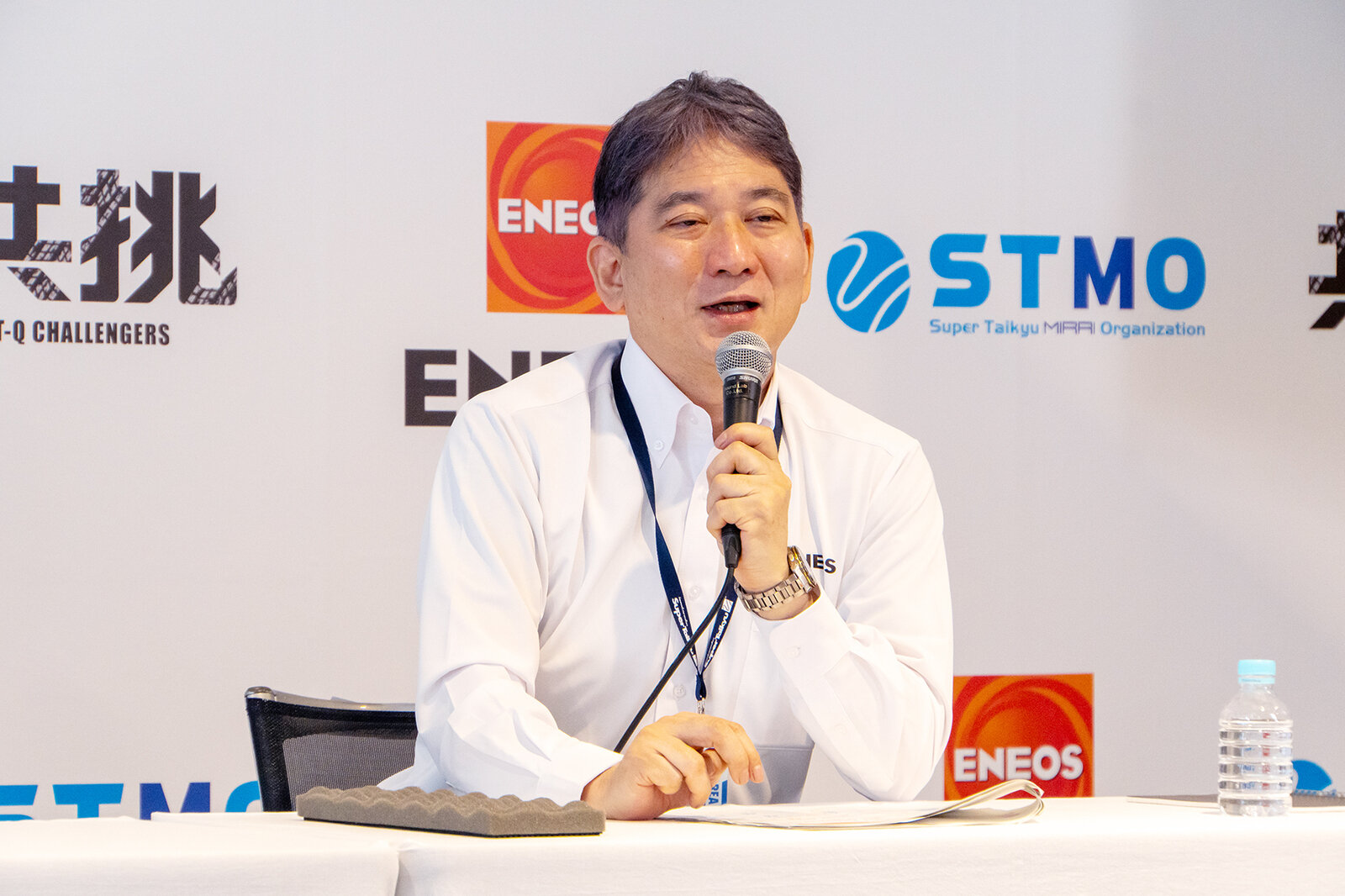
“Supporting ‘today's normal,’ taking the lead for ‘tomorrow's normal.’” When we were deciding on this wording, some in the company felt that “normal” was too plain and lacked impact, but I’m rather fond of it.
The word “arigato” (thank you) comes from “arigatashi,” an adjective that literally meant “difficult to exist”—that is, the opposite of “normal.”
We tend to consider the things around us as normal and unexceptional.
And yet, the fact that people and things happen to exist does not make that existence any less difficult. I think acknowledging this with the word “arigato” reflects a very Japanese mindset.
I think the same is true of energy. Energy cannot be seen with the eye, but it always exists around us, and it is this energy that sustains our rich and convenient lives.
Many different people, not only ENEOS, are involved in supplying energy.
As part of that society, at ENEOS, we want to continue our work assisting the supply of energy, even in a future carbon-neutral world.
One bit of background information I would like to share is this graph.
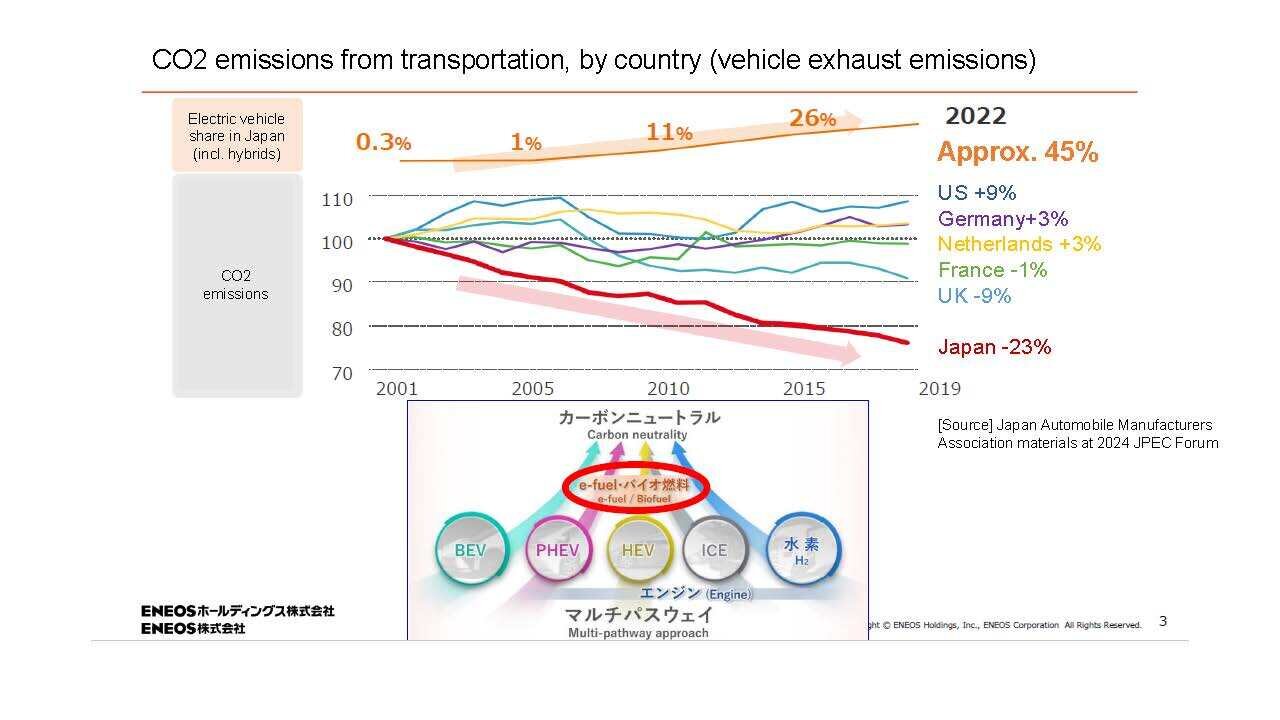
Running from the year 2000 to 2022, it shows the total amount of CO2 emitted by each country’s transportation sector—essentially, from the tailpipes of automobiles.
Even at a glance you can see that, among G7 members, Japan is the only country that is steadily reducing CO2 emissions.
When I show this graph, some people come back with the argument that Japan’s population is declining, and its economy is stagnant, but these factors alone cannot explain the data.
Japan has also been earnestly and diligently reducing CO2 emissions from cars. One specific change is the proportion of electric vehicles.
Automobile companies have been working hard to raise the share of electric vehicles, including hybrids (HEVs), while also continuing to improve fuel efficiency in gasoline vehicles.
Initially, Japanese carmakers faced criticism for being behind on battery EVs (BEVs), but now the world has acknowledged that a multi-pathway approach is necessary to achieving carbon neutrality in cars.
I believe we’re moving towards a global consensus that, while BEVs and hydrogen fuel cell vehicles (FCEVs) contribute a great deal, HEVs and internal combustion engine (ICE) vehicles can also be used to reduce CO2 emissions.
To cut emissions further, we must reduce the CO2 generated by the liquid fuels used in cars. In our view, we need to pour greater effort into e-fuels, synthetic fuels, and the biofuels that are being used here today by some of the ST-Q cars.
For those interested in learning more about the current state of the auto industry and Toyota’s efforts, quantitative data can be found at the Toyota Facts & Data link below, which provides detailed multi-pathway information.
Toyota Facts & Data
https://global.toyota/en/newsroom/fact-data/
Decarbonizing liquid fuels crucial for carbon neutrality
CTO Fujiyama (ENEOS)
This chart is from the Ministry of Economy, Trade and Industry. At present, our fuels consist of gasoline/petroleum, the orange segment.
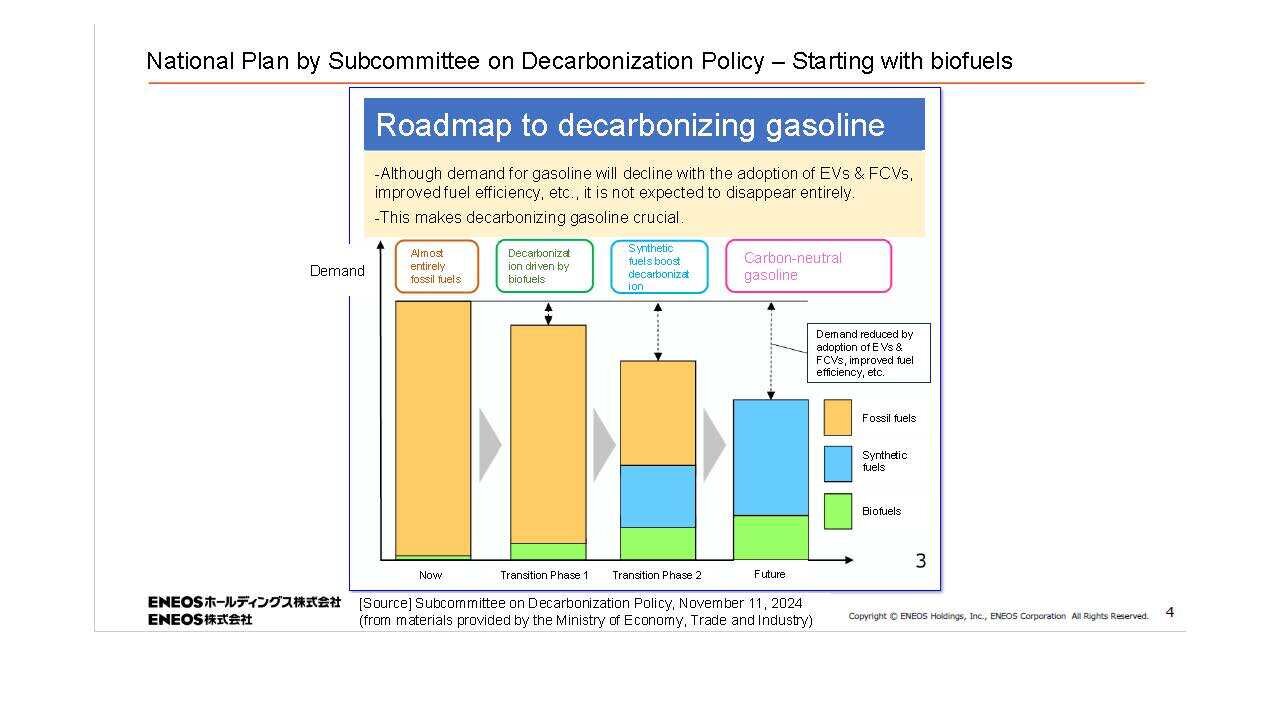
The total amount of fuel used will decrease, as cars become more efficient and are replaced by BEVs. This is why, as we move into the future, the blank space above each bar grows.
Despite that, liquid fuels are expected to remain in use even in 2050. However, the amount of petroleum in the mix is projected to steadily decrease, as we shift to biofuels and synthetic fuels (e-fuels), shown in green and blue.
The important thing here is the addition of biofuels (green) in Transition Phase 1. Recently, these are becoming easier to obtain and use.
Unfortunately, since biofuels are made from crops or biomass, the amount that can be produced is limited. Because this is not sufficient to supply all automobiles, synthetic fuels are predicted to eventually become the main option.
Today, I would like to focus on biofuels. Biofuels come in various types, and today the ST-Q class vehicles will be using gasoline blended with ethanol.
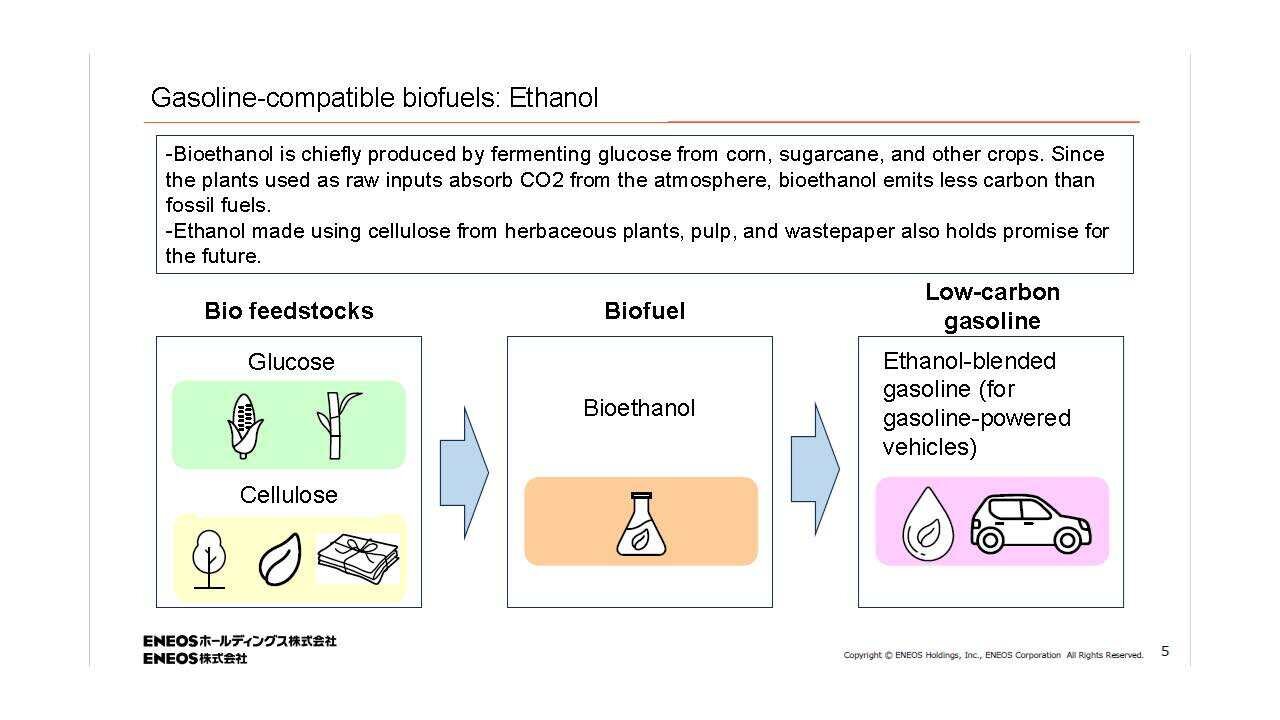
Ethanol is typically made from glucose*1 in crops such as corn or sugarcane.
Currently, we are researching how to produce ethanol from cellulose*2, which is not food.
We are striving to produce ethanol from sources such as wood, grass, and recycled paper, and then mix this with gasoline to power cars.
*1 A sugar abundant in fruits, grains, and other crops. *2 A type of dietary fiber consisting of linked glucose units.
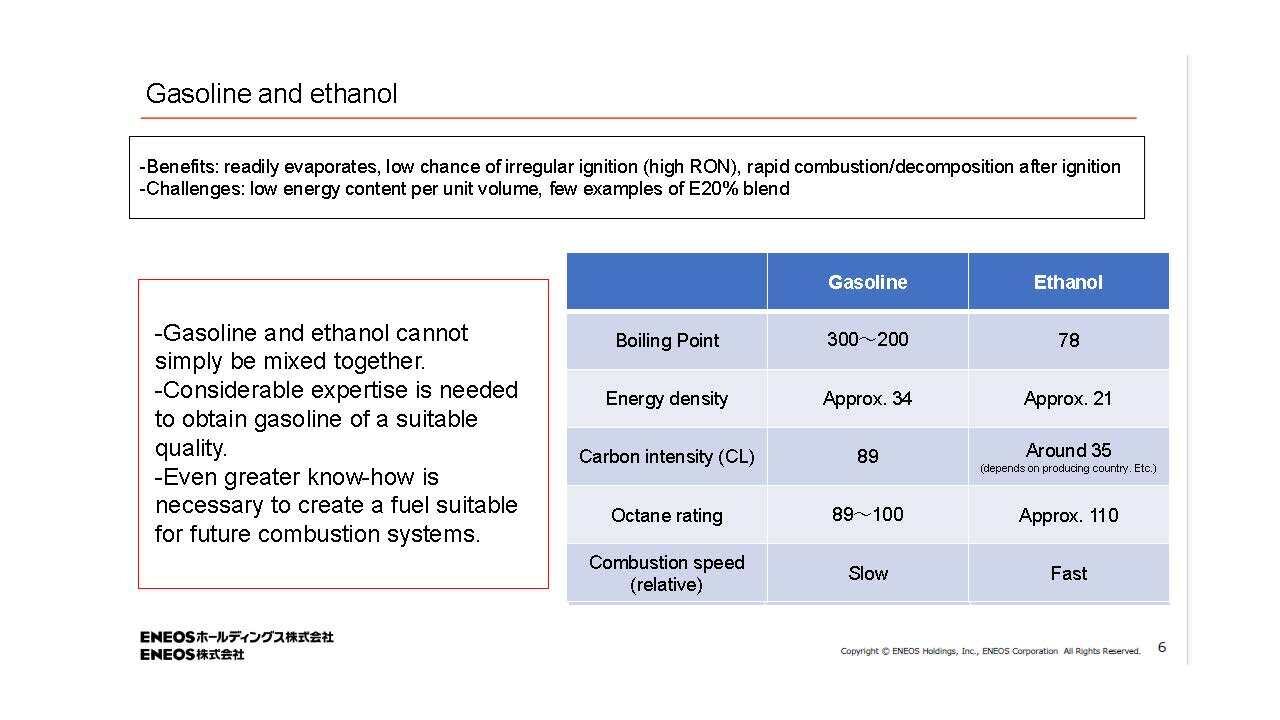
Gasoline and ethanol are completely different substances. Producing the fuel is not a matter of simply mixing the two and requires expertise to achieve the desired overall performance.
At ENEOS, our many years of working with gasoline have made us skilled in this kind of calibration. Thanks to thorough testing by the automobile companies, we have created a fuel that can serve their needs.
We are also preparing for the future rollout of e-fuels (synthetic fuels). To this end, we have built a synthetic fuel plant through the Renewable Energy Advanced Research Center’s Green Innovation Fund[K1] * and are conducting experiments with support from the Ministry of Economy, Trade and Industry.
*A fund from the Ministry of Economy, Trade and Industry to assist companies, etc. that demonstrate a commitment to pursuing specific goals toward achieving a carbon-neutral society by 2050.
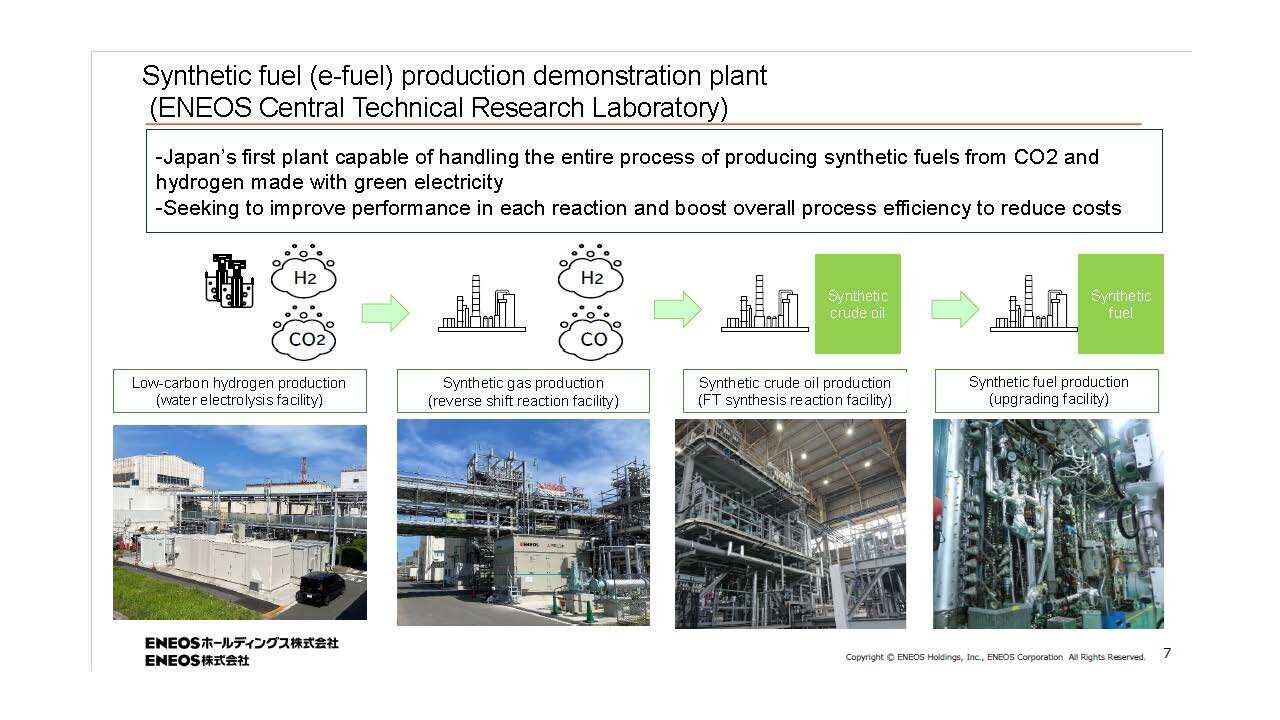
この取り組みを社会の皆様にも知っていただきたいと、23年のS耐富士24時間で走行デモをさせていただきました。
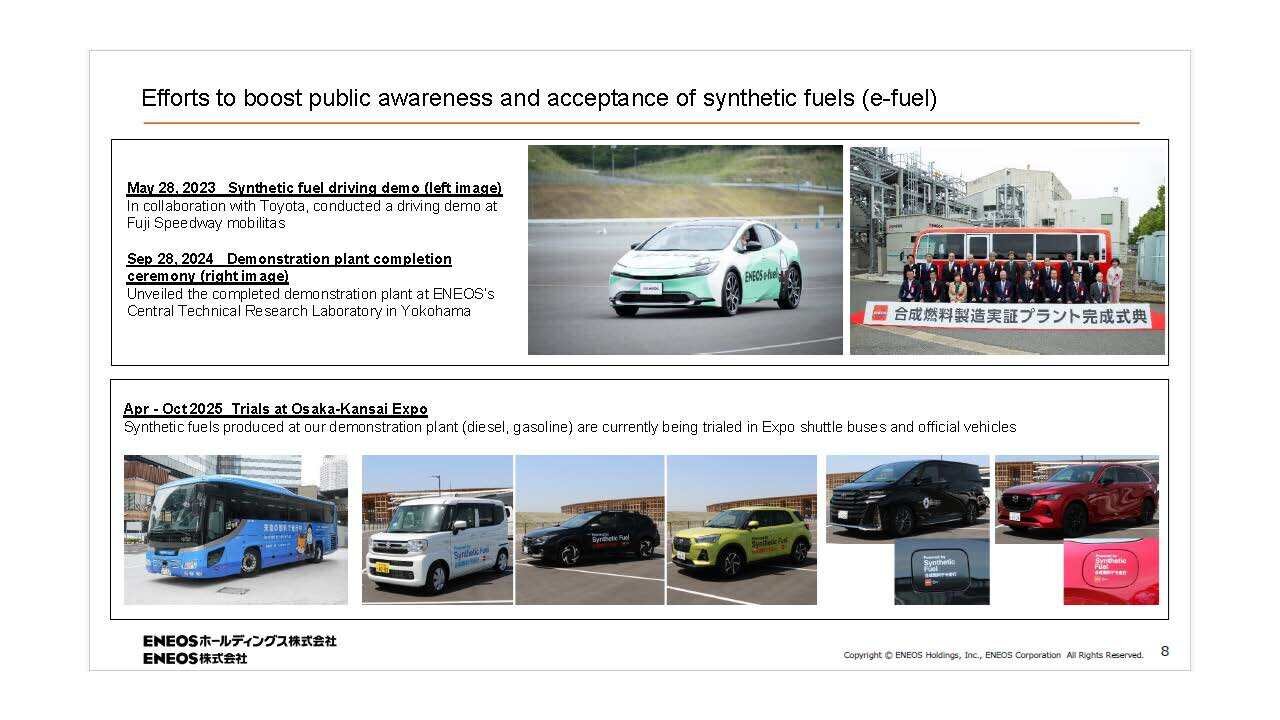
Synthetic diesel is currently being used by shuttle buses running between Osaka Station and the Osaka Expo venue. We are also supplying synthetic gasoline for official vehicles on-site.
Gas stations: a key part of daily life
CTO Fujiyama (ENEOS)
As Japan’s CO2 emissions are decreasing, so is the number of gas stations in the country. Lower emissions mean that less gasoline is being used, and the gas stations that supply it are also declining.
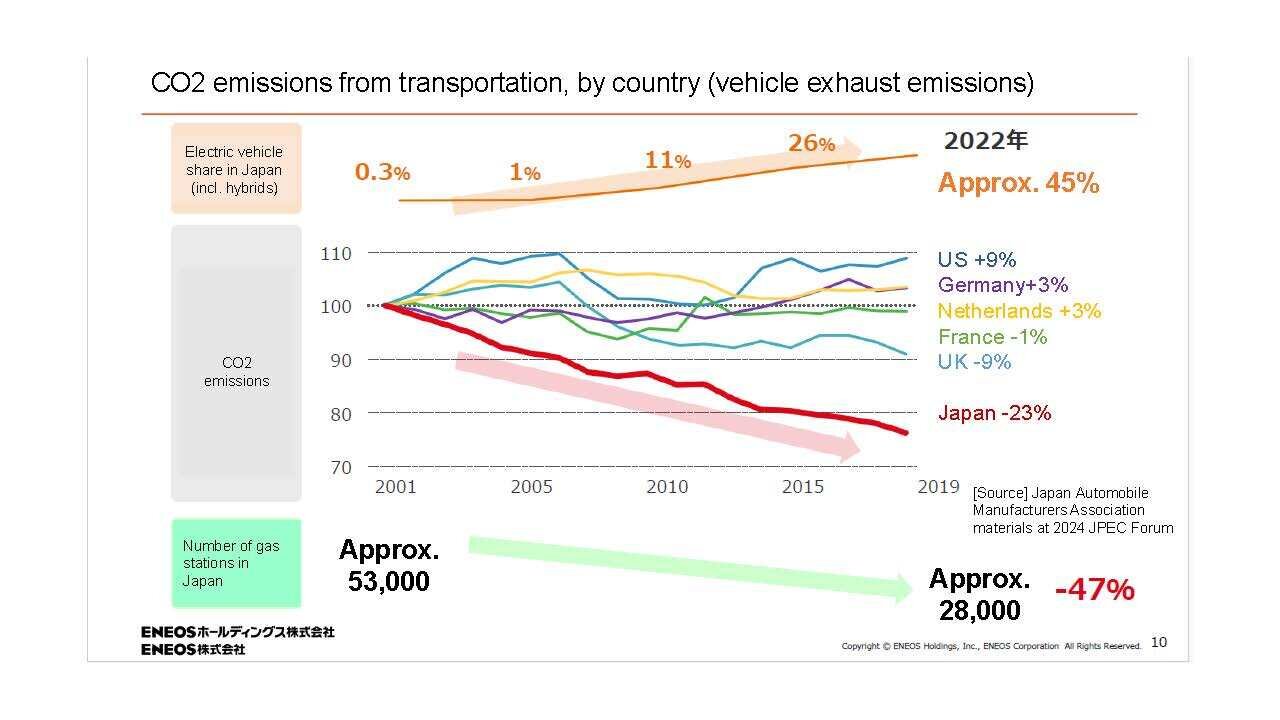
As this graph shows, while gasoline use is down 23%, the drop in gas stations is more than twice as large, at 47%.
Pursuing carbon neutrality via a multi-pathway approach is great, but even as our car companies work hard to produce PHEVs, HEVs, and various other options, they are running out of places to refuel.
Another aspect to consider is the issue of disaster resilience. When a disaster strikes, vital utilities are cut off. In such circumstances, gasoline is often the first thing to be distributed.
Liquid fuels are easily stored and transported. We believe this property makes them a vital source of resilience in difficult times.
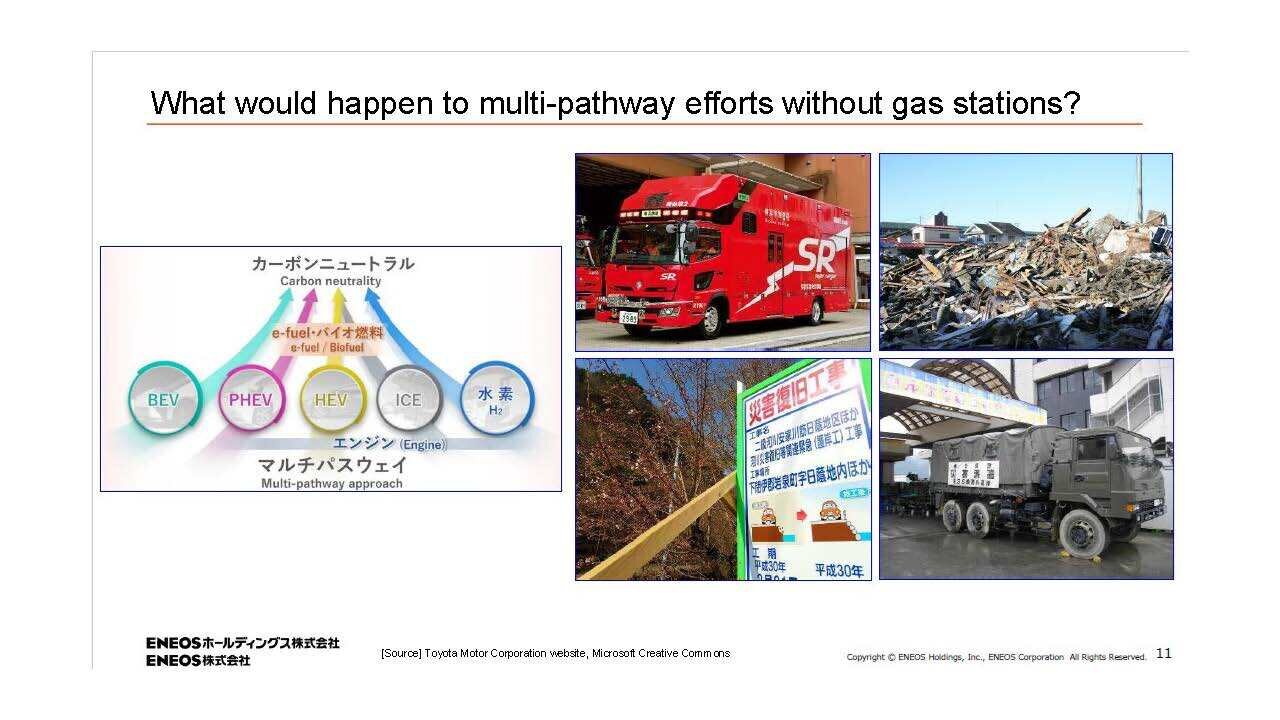
The Ministry of Economy, Trade and Industry has also noted the importance of service stations as hubs that underpin community life and resilience.
Normally, my personal connection to this matter makes it hard to speak about, but I am glad to be invited to discuss it here today. I hope we can take on this challenge together as an all-Japan team of fuel and car manufacturers.

